Francesco Verderosa's Palermo, c. 1920
Palermo, Sicily, at the end of the "Golden Age" of the picture postcard is our destination today
And we’re so baaaaack at doing “postcarding from the past”, and today I’d like to take you to one of my favourite places I’ve ever visited: welcome to Palermo, Italy, the capital of the autonomous province of Sicily. Locally also known as Paliemmu or Palèimmu, here’s some basic information (via Wikipedia; references omitted):
[It] is a city in southern Italy, the capital of both the autonomous region of Sicily and the Metropolitan City of Palermo, the city's surrounding metropolitan province. The city is noted for its history, culture, architecture and gastronomy, playing an important role throughout much of its existence; it is over 2,700 years old. Palermo is in the northwest of the island of Sicily, by the Gulf of Palermo in the Tyrrhenian Sea.
Needless to say, the city contains an enormous wealth of archaeological and historical sights, ranging from the Cathedral to the Norman Castle and the Capella Palatina to the more “modern” sites, such as the Teatro Politeama, a nineteenth-century gem.
As it happens, and while I have a wealth of colourful picture postcards from the Cold War, too (which I’ll show you in a second posting), today we’ll be talking about one Francesco Verderosa, a native of Palermo. and photographer-publisher extraordinary.
Who was Mr. Verderosa? Well, according to this dedicated website, he
published local topographicals into the divided-back era, many of them produced by Purger of Munich. In 1920 he was at 364 Corso [now via ?] Vittorio Emanuele. Palermo is the capital of the Italian island of Sicily.
Hence, Mr. Verderosa’s activities—much like the postcards of Mexico by Hugo Brehme—cover the final years of what academics have dubbed the “Golden Age” of the picture postcard (c. 1880-c. 1920). According to this dedicated postcard auction site, his postcards sell for some 3.90 to 7 Euros apiece.
And without much further ado, here are some of the postcards by Mr. Verderosa.
Palermo’s Main Sights
Unmailed, it shows a panoramic view of the Cathedral towards the Porta Nuova (New Gate).
Back in these olden days, churches were often shown on the picture postcards—another parallel to Hugo Brehme’s photography—with the above Church of St John the Hermit and the below Church of St Anthony being prime examples:
I do like the “street view” vibe of this one, including the cablecar.
No nineteenth-century Italian place is complete without sites dedicated to the giants of the Italian unification movement (although we note that Giuseppe Garibaldi—a “populist” in today’s parlance—is omnipresent, yet the powers-that-be, in particular the Piedmontese monarchs and their politicians, loathed his approach to politicking). Below, a view of the “Forum of Umberto I” (and the Monte Pellegrino in the background):
“Street Views”, 1920s Style
Yet, Francesco Verderosa’s postcards also show a quite different side of Palermo; much in line with what I dubbed “places not typically seen on postcards”—check the below piece for examples from Krumau/Český Krumlov, Czechia—there are several such specimen found among Erich Sonntag’s Palermo-themed postcards:
While the above view of the harbour is both quite “canonical”, it also shows the routine activities a century ago. Much like the streetcar in the above postcard, the steamers show off a quite distinct feature of Modernity and Progress, technological accoutrements of bourgeois-European civilisation. Yet, there may be “hybrid” street views, such as the below “small square in front of the Porta d’Ossuna”, which shows both a streetcar, single-axle push-cart (bottom-right corner) and several children running around:
Behold the below “ordinary people [popolani] in a courtyard” (the line of grey rectangles is an artefact of the scanning machine I used), which shows a very different part of Palermo’s inhabitants:
The discrepancy to, say, the elegant buggies in the postcard showing the “Forum of Umberto I” (above) or the “street corner at Castelnuovo Square” (below) couldn’t be greater:
In the final analysis, though, here’s my personal favourite—although both undated and without any reference to Mr. Verderosa, it shows the Via Borgo, the Church of Saint Lucia (one of Sicily’s main patron-saints), and—children playing at the quay: imagine the horrified antics of present-day parents and onlookers alike:
In the end, if you’ve got the opportunity to go—which I had courtesy of a conference hosted by the Mediterranean Studies Association back in 2016—I recommend a trip to Palermo (although when I went in late May, it was already very warm: I suppose late April/early May would be the best time to visit).
More colourful postcards from Palermo are up next—stay tuned, I’ll keep you posted!




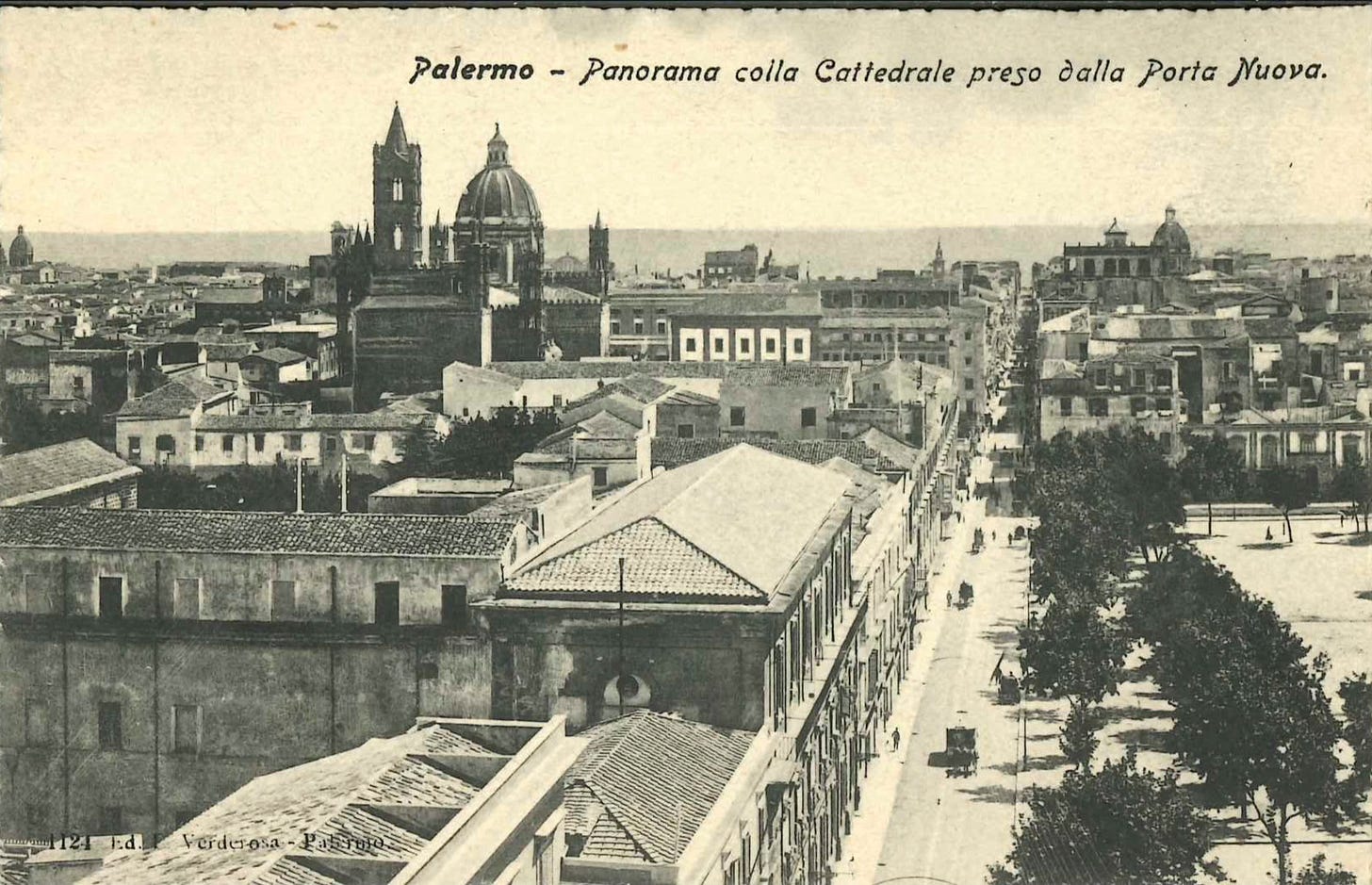
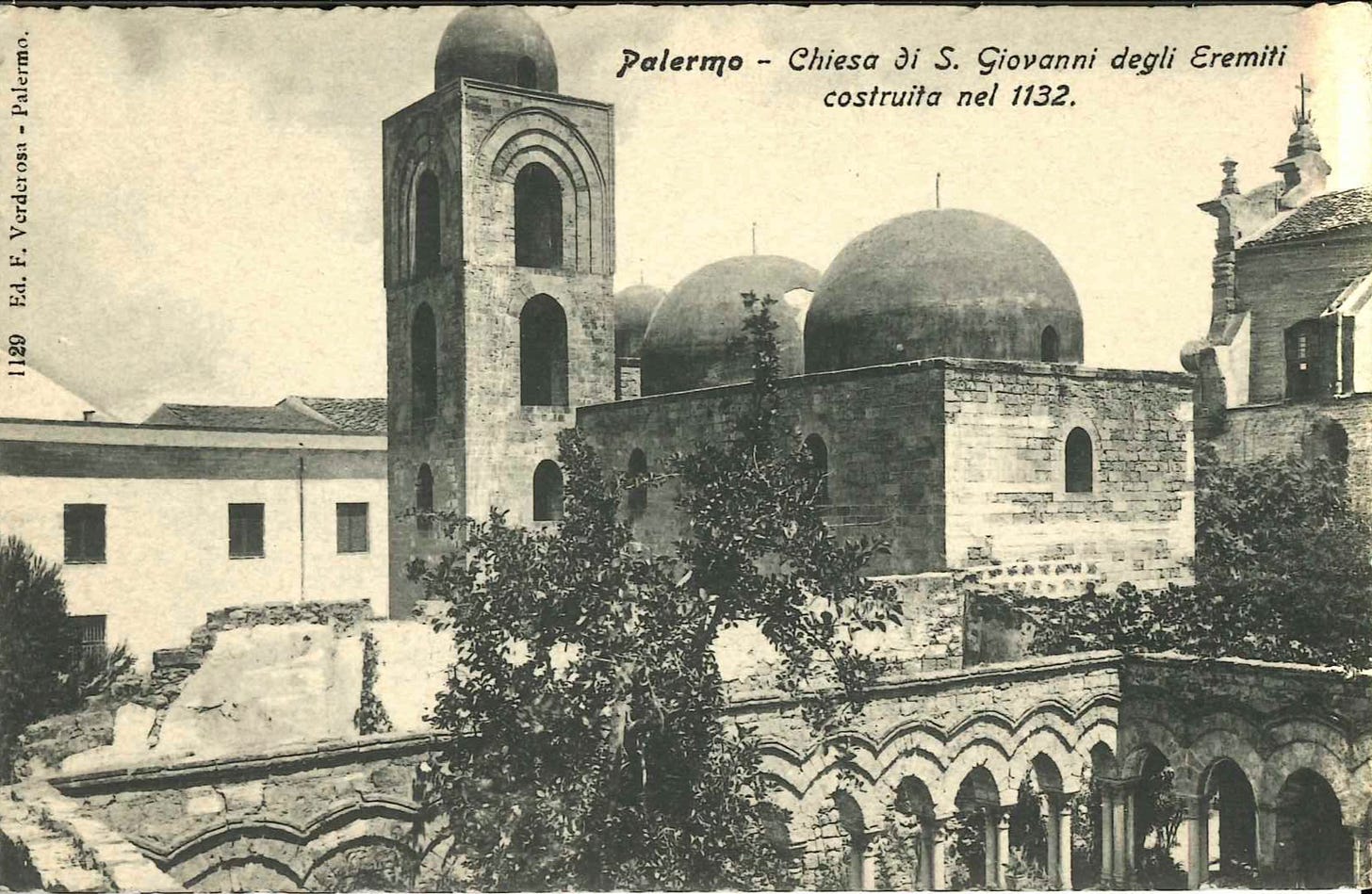


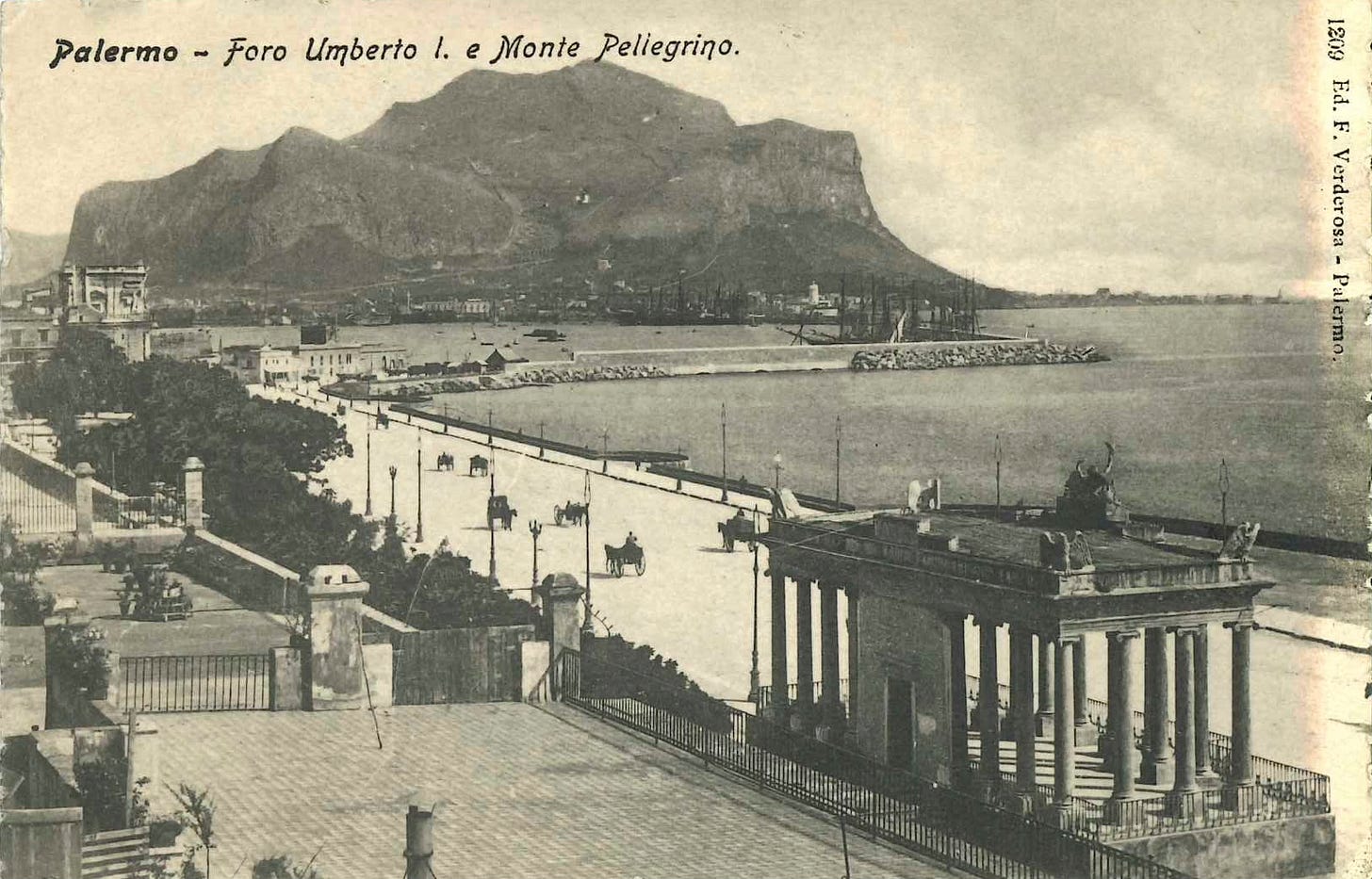


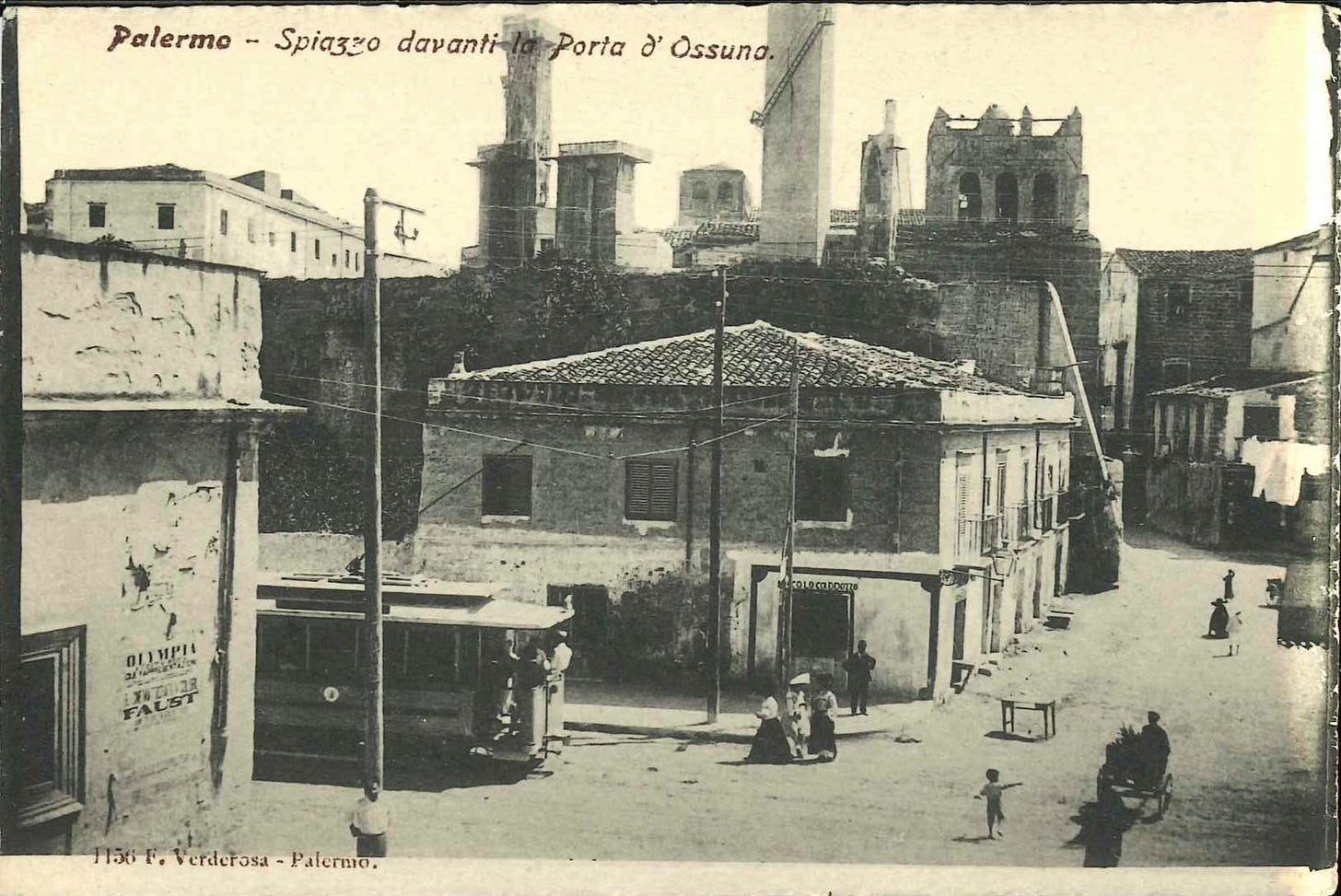
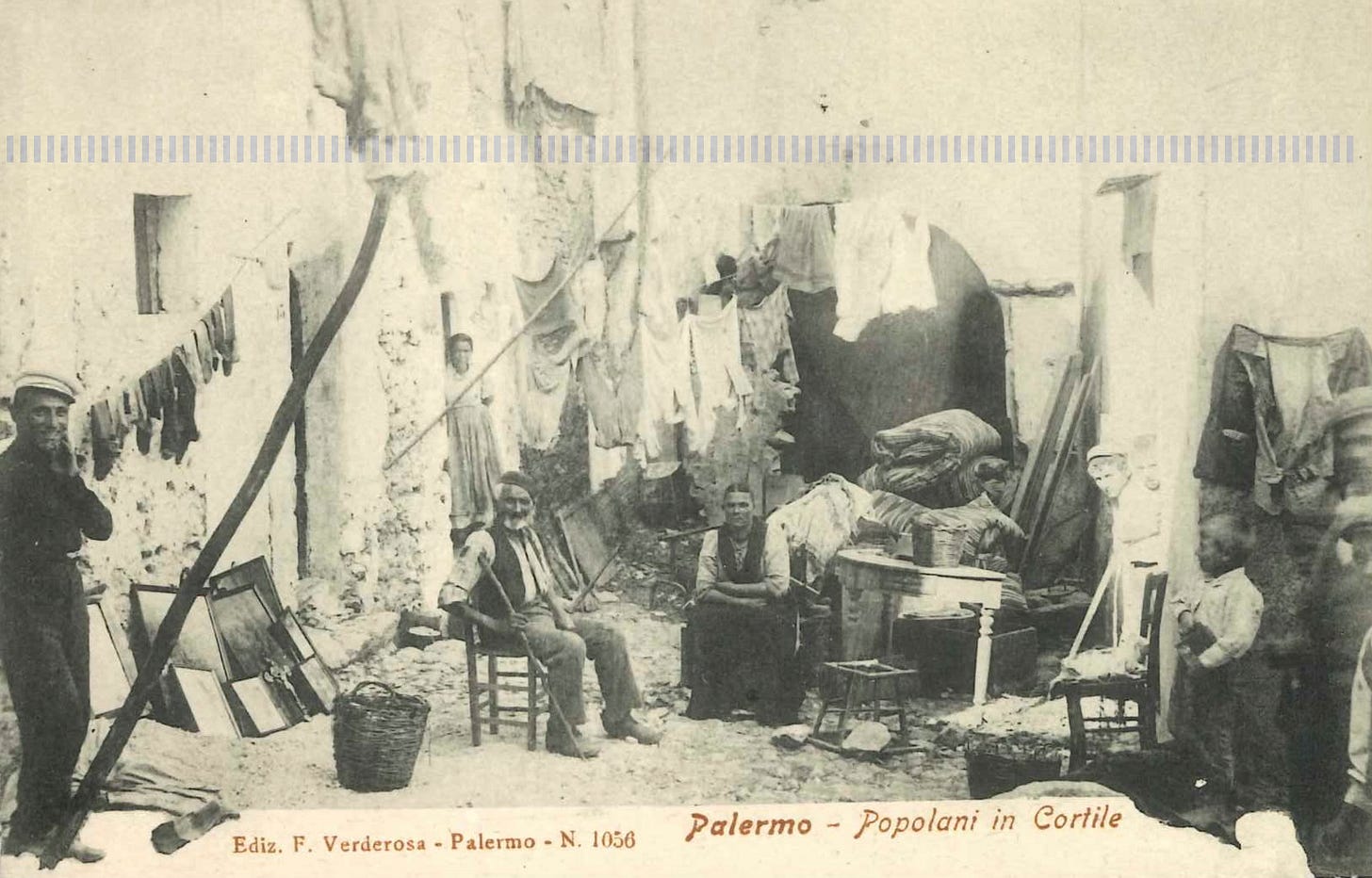
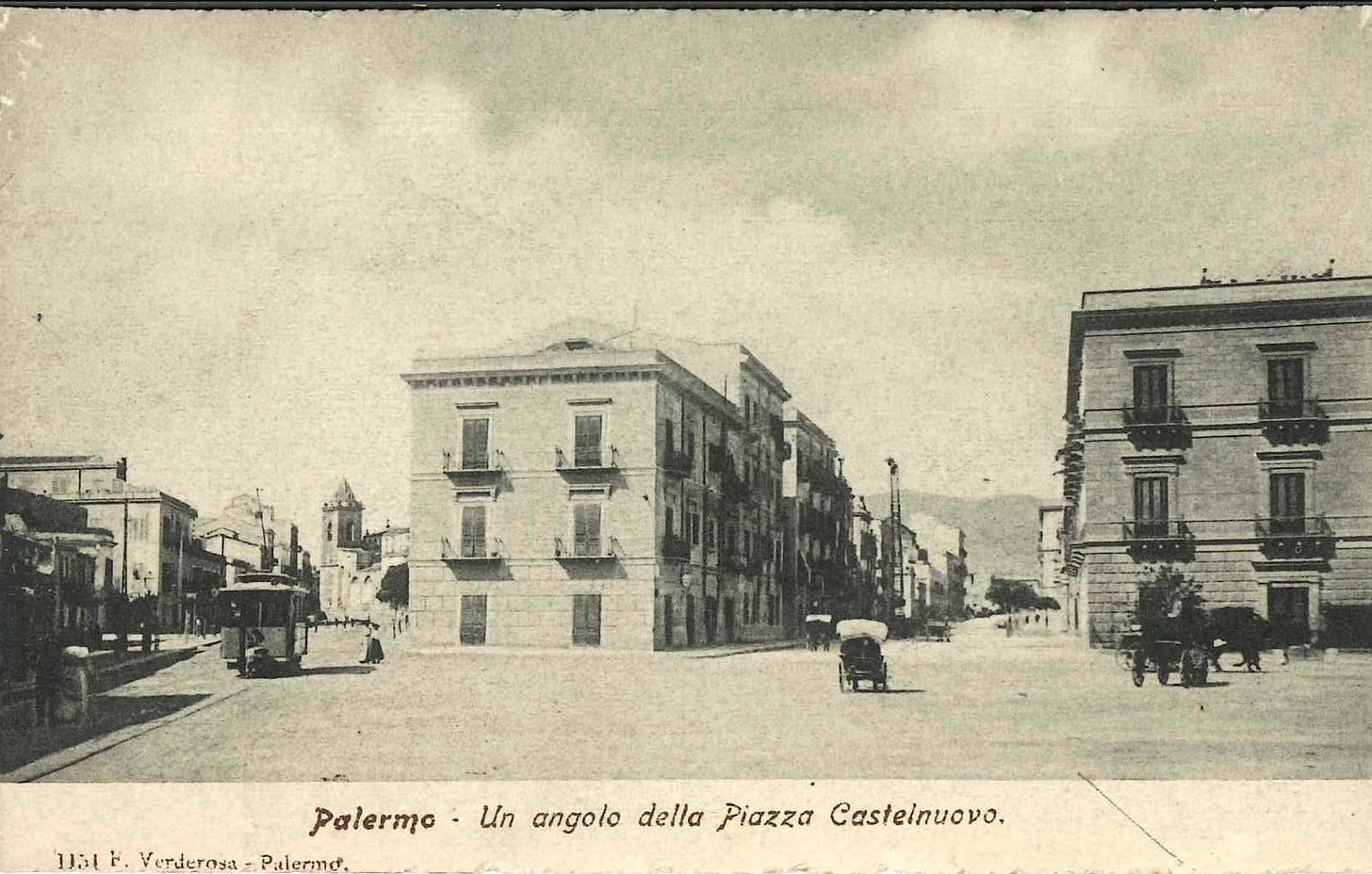

I think I would have enjoyed seeing the city—back then Lol